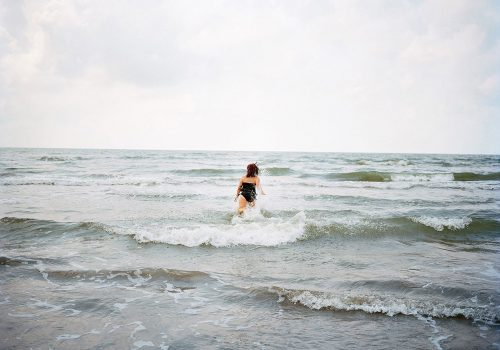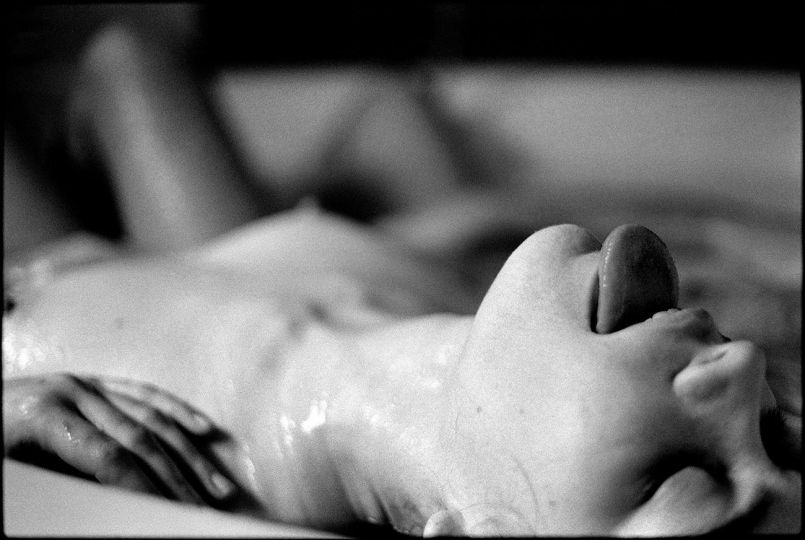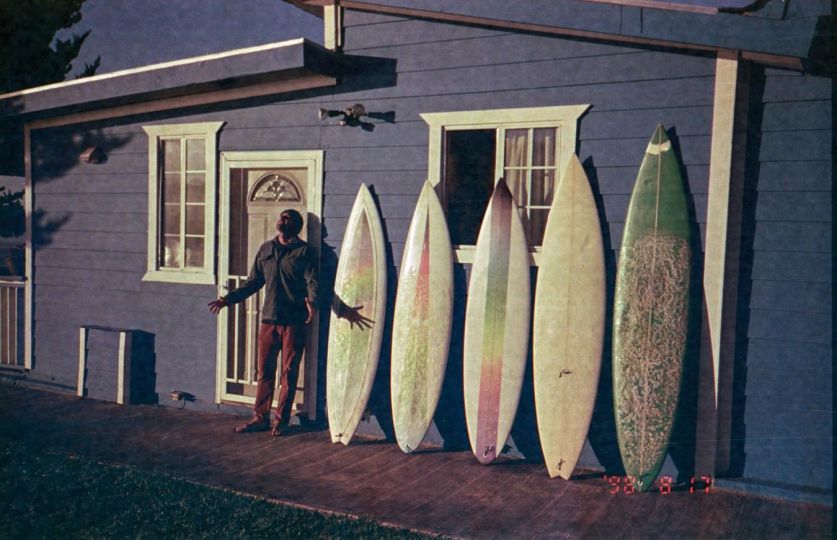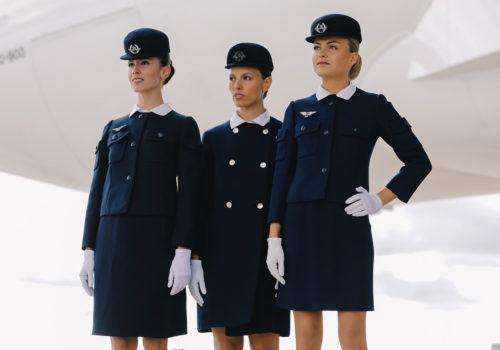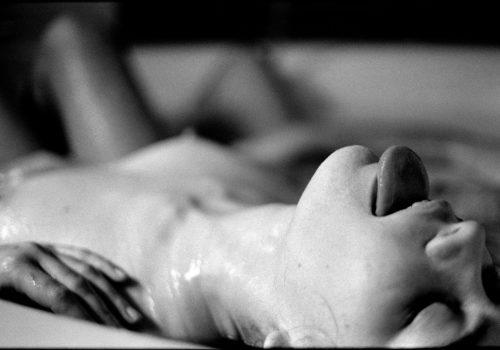Sara Macel was born in 1981 in Houston, TX. In her ongoing project, What Did the Deep Sea Say, she explores the town where her grandmother stayed during World War II in an attempt to uncover the personal history.
It was two years ago at Photoville that your series What did the deep sea say was exhibited. It’s here possible to sense the power of stillness. When did you start this project? And what sparked this exploration?
“The power of stillness” is a such a beautiful way to describe this series, so thank you first of all. In 2014, my uncle found a long forgotten suitcase full of old family snapshots in his basement, and that suitcase became the catalyst for What Did the Deep Sea Say. He gave it to me and asked that I archive the photos for the family. Thinking it was just a bunch of random old family snapshots of my mom and her siblings as kids, I didn’t pay much attention to it for months. And when I finally got around to going through it, it was exactly what I anticipated…until I got to the very bottom of the pile. Underneath the typical family snapshots were two sealed envelopes: one of old black and white Brownie negatives and the other with small black and white snapshots. In the negatives were palm trees and the ocean and a very attractive shirtless man that looks familiar. My grandmother was from Jersey. They don’t have palm trees like these in New Jersey. And the man I quickly recognized as Father Jim, the family priest who was always very close to my grandmother and a fixture in our lives. But here he was young and handsome and smiling at her behind the camera with a twinkle in his eye. I felt like I found her secret diary. What do these photographs mean? Why were they sealed up in the bottom of this suitcase? And that led to the broader questions of: what version of the truth gets passed down to the next generation and what stories do we keep locked in our hearts? And what kind of woman was my grandmother before she became a wife and mother? What were her options in terms of love and how have those choices or pressures shifted from her generation to mine? What did she think about when she was alone and what did that look like? These were some of the questions I had when I began this series.
The title, What Did the Deep Sea Say, is from a Woody Guthrie song by the same name. It tells of a sailor lost at sea that never wrote home and the ocean that took him continues to “roll on its weary way.” My grandfather was a sailor during the war and Hollywood, FL was home to Naval Air Gunners School and US Naval Indoctrination and Training School, so this was the historical background to my grandmother’s sunny beach photographs. Beyond the sailor connection, the song is about being unable to ask the dead what happened to them. My grandparents died when I was in high school and Father Jim passed soon after. With them gone, and all that remains to hint at their story are her photographs and the sea that connects us.
Are those photographs all made during your staying in Florida? If yes, would you consider other places?
Almost all of the color photographs were made in Hollywood, Florida and surrounding areas, because it was important to the story to have a strong sense of this place as being caught in this time loop between the past and the present. The name itself – Hollywood – is so evocative of film and desire and facade. However, there are a few images of my mother, myself, and the suitcase that were made in other locations but that fit the themes of the work. My personal work straddles the line between fact and fiction. Some photographs are staged in order to visually represent an idea; others were shot years ago but work within the context of the narrative.
One of the self-portrait you made in the series, blends elements of the ocean, beautiful sunset, room decoration with the reflections of you with your camera. When looking through the series on your website, there is a black and white photograph, presenting your grandmother holding a camera. Would you say this is one of the method you applied to rebuild the connection of you and your grandmother?
That self-portrait was taken at sunrise on my first trip to Hollywood. I went out on the balcony of my hotel room to shoot the boardwalk from above when it was mostly empty of people. And when I turned around, I saw this amazing scene in the reflection of the sliding glass door. It was one of those rare wonderful moments as a photographer when your heart is racing to get the shot before it disappears forever. It really was just a coincidence that it mimics my grandmother’s self-portrait with her camera. But it was a connection I soon discovered looking at her images next to my own from that first trip. And that idea of using my grandmother’s photographs as inspiration for my color photographs became one of my go-to methods for image- making on subsequent trips. By working in this way, I was able to use photography to talk to her. Her photographs essentially became letters for her granddaughter to answer 22 years after her death. Time is a funny thing. It is a precise measurement used to determine how much light enters our camera to take pictures, yet it is so slippery when it comes our memories and family histories.
Could you give more examples of how you relate to your grandmother in a specific way?
The relationship between her black and white photographs from the 40’s and my color medium format photographs from 2015-2017 is that of a conversation. I used her images as clues not just for places to revisit, but also for photographic techniques and composition. For example, one negative of hers is a double exposure. I can only assume it was an accident since it is the only one like this, but it is one of my favorite images ever. So, I started taking double exposures myself as a call and response to borrow a phrase from music.
I believe books and art and movies have a way of finding you at just the right point in your life for you to discover them. I think this is what happened with that suitcase. My grandmother was in her late twenties during the time the photos were taken. She was older than most of her unmarried friends and her parents were eager to see her married. I imagine that she went to Hollywood to escape those pressures and live in this fantasy bubble while the world was literally at war around her. And I can understand that desire for escape. I make most of my personal work away from home, and traveling alone to make photographs feels exhilarating and free but also lonely. When I began working on this, I was figuring out my own feelings about marriage and children. I became engaged recently, and I think looking more closely at my grandmother’s life and my own mother’s life; thinking about their identities as women within and apart from their marriages; and really talking to my mom and reflecting on what I want out of life informs the work. Hollywood has become this sacred space where the three of us women can connect and speak freely and support each other across space and time.
What did you discover about your grandmother after you finely opened that long-forgotten suitcase?
I had no idea Grandma was such a good photographer! My mom has always been artistic as well, so finding that creative lineage was exciting. Another unexpected development was bringing my mom into the images. She is the most tangible connection between my grandmother and myself. She has always been the source of family stories and tales of my ancestral past, plus she’s a great investigator and naturally chatty. So it was great to bring her in and make her an integral part of the story. Plus, it goes back to my last project, May the Road Rise to Meet You, about my dad’s life on the road selling telephone poles across America. One of the most asked questions I get about that work is: “What did your mom think about your dad being away from home so often?” So this gave me an opportunity to tell part of her story and explore her solitude and desires.
Interview by Jing Zhao
Jing Zhao is a writer specializing in arts. He lives and works in New York, USA.

